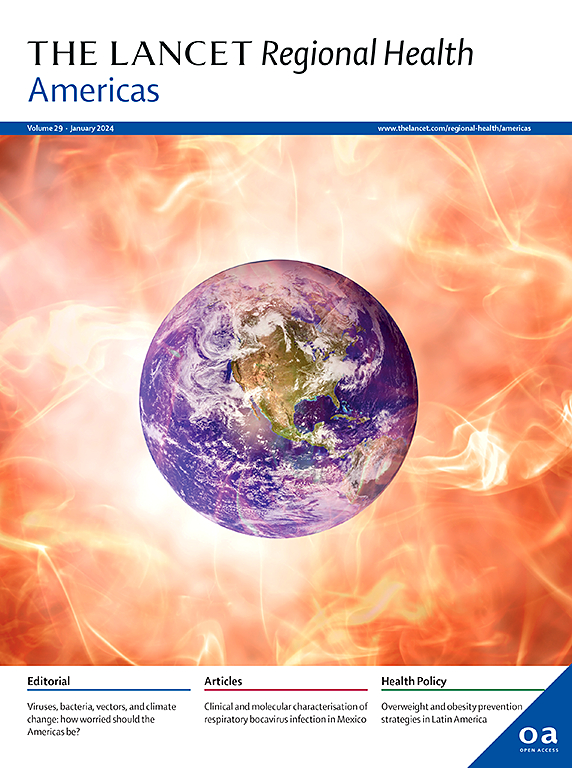巴西的幼儿死亡率和实现相关可持续发展目标的进展:一项全国人口研究
IF 7
Q1 HEALTH CARE SCIENCES & SERVICES
引用次数: 0
摘要
自2000年以来,幼儿死亡率大幅下降,保持这一进展可以挽救全世界1 100多万儿童的生命。在巴西,实现统一降低生命早期死亡率仍然是一项重大的公共卫生挑战。本研究分析了巴西各地区早期生命死亡率的分类趋势,并评估了各地区在实现可持续发展目标(sdg)和巴西国家目标方面的进展。方法以人群为基础进行分析和生态学研究。我们分析了1998年至2022年连续5年期间巴西各地区和各州官方政府信息系统的数据。所审议的可持续发展目标具体目标是:五岁以下儿童死亡率(U5MR)为每1000例活产死亡25人,新生儿死亡率(NMR)为每1000例活产死亡12.0人,婴儿死亡率(IMR)为每1000例活产死亡15.7人。巴西调整后的国家目标是:U5MR分别为8.3,NMR为5.3,IMR为7.7 / 1000活产。我们计算了每五年死亡率的绝对年变化(AAC),以评估趋势并推断实现2030年目标的可能性。在1998年至2022年期间,巴西5岁以下儿童死亡率下降了54%,从每1000例活产死亡32.5例降至15.1例。全国平均水平达到了所有年龄段的可持续发展目标,但没有一个州实现了更严格的IPEA目标。从2018年到2022年,五岁以下儿童死亡率和婴儿死亡率呈逐年上升趋势(AAC分别为+0.22和+ 0.10),而新生儿死亡率保持稳定(AAC = - 0.02)。地区差异依然存在。2022年,圣卡塔琳娜州(南部地区)的5岁以下儿童死亡率最低(每1000例活产死亡11.5人),罗赖马州(北部地区)的5岁以下儿童死亡率最高(每1000例活产死亡24.6人)。尽管大多数国家预计到2030年将实现可持续发展目标中5岁以下儿童的具体目标,但没有一个国家有望实现IPEA的目标。尽管各国在实现关于生命早期死亡率的可持续发展目标方面取得了进展,但最近五岁以下儿童和婴儿死亡率的上升以及持续的区域不平等威胁着未来的进展。持续改善将需要有重点的、针对具体区域的战略,以解决造成这些差异的社会和健康决定因素。本研究没有得到任何资助机构的特别资助。本文章由计算机程序翻译,如有差异,请以英文原文为准。
Early-life mortality rates in Brazil and progress toward meeting related sustainable development goals: a nationwide population study
Background
Early-life mortality rates have significantly declined since 2000, and sustaining this progress could save over 11 million children's lives worldwide. Achieving uniform reductions in early-life mortality remains a critical public health challenge in Brazil. This study analyzed disaggregated trends in early-life mortality across Brazilian regions and assessed each region's progress toward meeting the Sustainable Development Goals (SDGs) and national targets for Brazil.
Methods
This is a population-based analytical and ecological study. We analyzed data from official government information systems for Brazilian regions and states over five consecutive five-year periods between 1998 and 2022. The SDG targets considered were: an under-five mortality rate (U5MR) of 25 per 1000 live births, a neonatal mortality rate (NMR) of 12.0 per 1000 live births, and an infant mortality rate (IMR) of 15.7 per 1000 live births. Brazil's adjusted national targets were: U5MR of 8.3, NMR of 5.3, and IMR of 7.7 per 1000 live births, respectively. We calculated the absolute annual change (AAC) in mortality rates for each five-year interval to assess trends and infer the likelihood of meeting the 2030 targets.
Findings
Between 1998 and 2022, U5MR in Brazil declined by 54%, from 32.5 to 15.1 deaths per 1000 live births. The national average met the SDG targets for all age strata, but no state achieved the stricter IPEA targets. From 2018 to 2022, under-five and infant mortality rates showed annual increases (AAC = +0.22 and + 0.10, respectively), while neonatal mortality remained stable (AAC = −0.02). Regional disparities persisted. In 2022, Santa Catarina (South region) had the lowest U5MR (11.5 deaths per 1000 live births), while Roraima (North region) had the highest (24.6 deaths per 1000 live births). Although most states are projected to meet the SDG targets for U5MR by 2030, none are on track to meet the IPEA goals.
Interpretation
Despite national progress in meeting SDG targets for early-life mortality, recent increases in under-five and infant deaths and enduring regional inequalities threaten future gains. Sustained improvements will require focused, region-specific strategies to address the social and health determinants driving these disparities.
Funding
This research received no specific grant from any funding agency.
求助全文
通过发布文献求助,成功后即可免费获取论文全文。
去求助
来源期刊

Lancet Regional Health-Americas
Multiple-
CiteScore
8.00
自引率
0.00%
发文量
0
期刊介绍:
The Lancet Regional Health – Americas, an open-access journal, contributes to The Lancet's global initiative by focusing on health-care quality and access in the Americas. It aims to advance clinical practice and health policy in the region, promoting better health outcomes. The journal publishes high-quality original research advocating change or shedding light on clinical practice and health policy. It welcomes submissions on various regional health topics, including infectious diseases, non-communicable diseases, child and adolescent health, maternal and reproductive health, emergency care, health policy, and health equity.
 求助内容:
求助内容: 应助结果提醒方式:
应助结果提醒方式:


